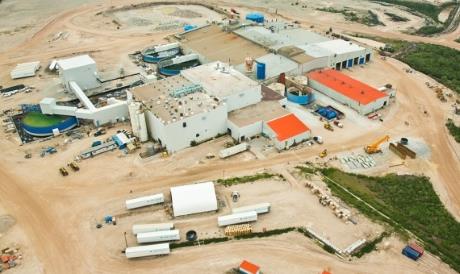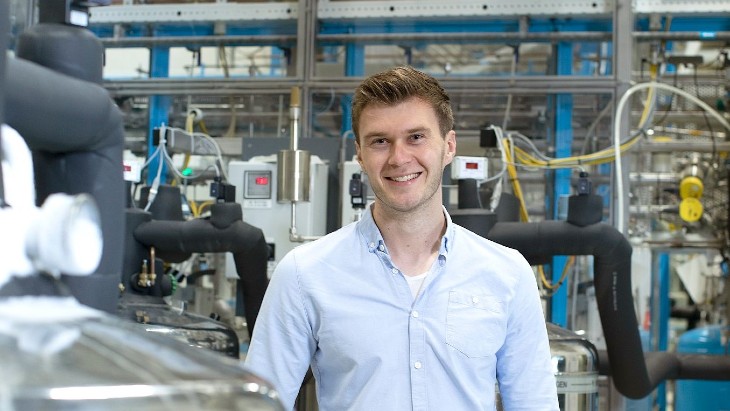Cameco scales back uranium production
Cameco is suspending production at the Rabbit Lake uranium mine in northern Saskatchewan, curtailing production at its US uranium operations, and reducing production at McArthur River/Key Lake in response to market conditions, the company announced yesterday.
 |
| Rabbit Lake (Image: Cameco) |
Work to transition the underground Rabbit Lake mine to care and maintenance will begin immediately and is expected to be completed by the end of August. Production at the US in situ leach operations cannot cease immediately because of the nature of the technology, and will instead decrease over time as head grades decline. The development of new wellfields will be deferred.
"Unfortunately, continued depressed market conditions do not support the operating and capital costs needed to sustain production at Rabbit Lake and the US operations," CEO Tim Gitzel said. "These measures will allow us to continue delivering value to Cameco’s many stakeholders and support the long-term health of our company. We will provide assistance to those affected by these decisions," he said.
The operational changes are expected to result in a reduction of about 500 employees at Rabbit Lake and 85 at the US operations. A workforce of about 150 will be required to maintain facilities and continue environmental monitoring and reclamation work at Rabbit Lake. About 170 people will remain in employment at the US operations to operate existing facilities and restore depleted wellfields. Cameco also intends to review its office activities in support of operations at Rabbit Lake and the US facilities, with the aim of reducing general and administrative costs.
Final 2016 production at Rabbit Lake is now expected to be 1.0 million pounds U3O8 (385 tU), down from the 3.6 million pounds (1385 tU) expected previously, while US production is expected to be 1.1 million pounds U3O8 (423 tU), down from 1.4 million pounds (539 tU).
The company will also reduce 2016 production at the McArthur River/Key Lake operation in Saskatchewan to 19 million pounds U3O8 (7308 tU), down from 20 million pounds (7693 tU), in response to a currently oversupplied uranium market. "We will take the opportunity from additional downtime at the mill to further advance work needed to increase the mill’s production capacity for when the market signals it is needed. This includes changes to the solvent extraction circuit, bringing some work on the crystallization circuit forward from 2017 and transitioning to the new calciner," the company said.
Meanwhile, production at Cigar Lake continues to ramp up, with plans to produce 16 million pounds U3O8 (6154 tU) this year subject to Areva's McClean Lake mill receiving the necessary regulatory approvals to increase its annual capacity.
In light of the operational changes, Cameco now expects its total annual production to be 25.7 million pounds U3O8. Previously, planned production for the year had been 30 million pounds.
The carrying value of Rabbit Lake is about CAD108 million ($85 million) and that of the US operations is CAD62 million ($48 million), net of provisions for reclamation. The cost of placing Rabbit Lake into care and maintenance for 2016 will be about CAD35 million. The operational changes are expected to reduce capital expenditures by about CAD48 million, Cameco said.
The company said that placing Rabbit Lake into care and maintenance and deferring US wellfield development rather than closing the operations permanently would give it the flexibility to increase production when market conditions improve. "However, with today’s oversupplied market and uncertainty as to how long these market conditions will persist, we need to focus our resources on our lowest cost assets and maintain a strong balance sheet," the company said.
Uranium production began at Rabbit Lake in 1975, making it the longest-producing uranium mine in North America. Recent production has been from the Eagle Point deposit. However, earlier this year Cameco wrote down CAD210 million in relation to Rabbit Lake operations, due to increased uncertainty over future production sources for the Rabbit Lake mill. Rabbit Lake is 100%-owned by Cameco. The company owns 70% of McArthur River, 83% of Key Lake and 50% of Cigar Lake.
Cameco's US uranium operations comprise Crow Butte in Nebraska and Smith Ranch-Highland in Wyoming. Both are 100%-owned by Cameco, and their combined output had made Cameco the largest uranium producer in the USA.
Researched and written
by World Nuclear News
_49098.jpg)
_57190.jpg)
_70526.jpg)
_75453.jpg)






..._58412.jpg)
